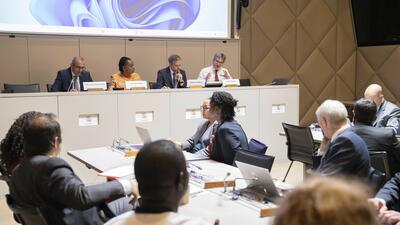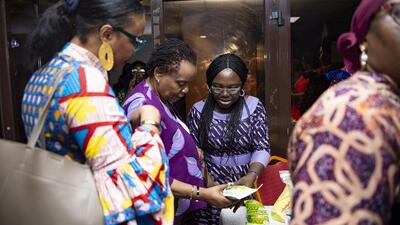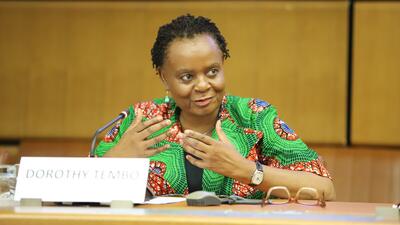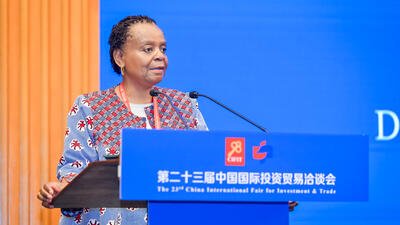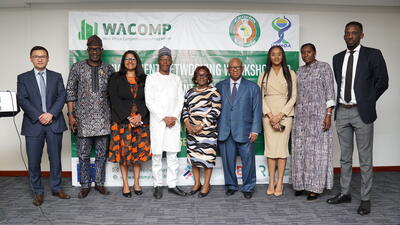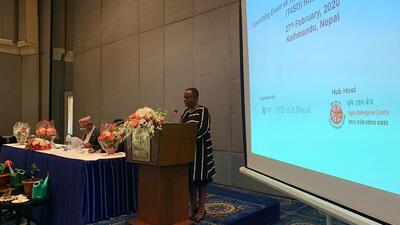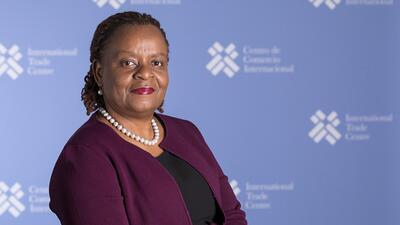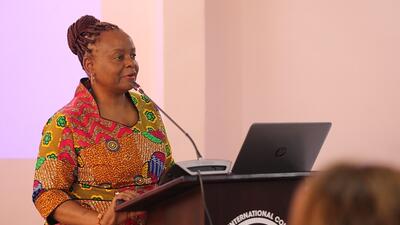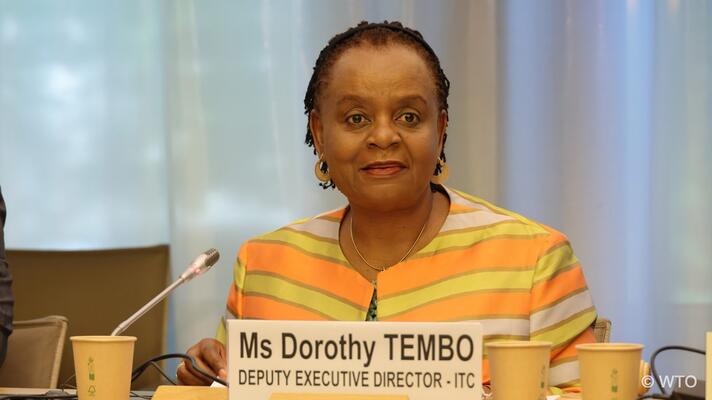
Empower women-owned businesses through gender-responsive public procurement
(Geneva, Switzerland) Deputy Executive Director Dorothy Tembo updated the WTO’s Agreement on Government Procurement Committee on the Gender-Responsive Public Procurement global campaign.
Dear Chair, Deputy Permanent Representative Martin Zbinden of Switzerland; distinguished delegates; ladies and gentlemen.
Greetings and thank you for the opportunity to share an update on behalf of the International Trade Centre on an exciting new global campaign—one which aims to help bring the world closer to achieving SDG 5 on gender equality.
That campaign is on gender-responsive public procurement, and it’s one that we have the honour of organizing alongside UN Women.
It’s the result of years of research, alongside extensive work on-the-ground with women-led businesses, and close engagement with decision-makers like you.
And it’s one whose time has finally come: in a world where, according to the World Economic Forum, gender parity is still over 130 years away, we need to use every tool at our disposal if we’re going to turn things around and reach gender equality by 2030.
Last month, a new survey titled “We the Women” was released by the United Nations Office of Partnerships, bringing together feedback from 25,000 women on their hopes, fears, and objectives for the coming years, and what they need to thrive.
I’ll give you one finding that reinforces, for ITC, why the timing of this campaign is right.
The report finds that well over half of the women surveyed—57%, to be exact—felt that their quality of life was going to get better between now and 2029.
Very few women—less than one-tenth of those surveyed—felt that things would go in the other direction.
I’ll say it once more: nearly 60% expected their lives to get better over the next five years. We need to live up to that hope. We need to do better by women and girls.
Gender-responsive public procurement is one such tool for making that possible, and it’s a critical one given governments’ massive purchasing power. With one percent of public contracts globally going to women-led businesses, it’s also clear that it’s a tool we’re not using nearly enough.
Some of you may have attended the “soft launch” of our new campaign during the WTO-ITC High-Level Event on Women and Trade in Abu Dhabi during MC13, alongside Under-Secretary Claudia Sanhueza from Chile.
Having that soft launch in parallel to the WTO’s Thirteenth Ministerial Conference was critical—it gave us a chance to hear, directly from the trade community, why this campaign mattered to them, and what they would need from us if they were going to make change happen at home.
The enthusiasm and excitement we witnessed in Abu Dhabi reaffirmed that now is the time to put gender-responsive public procurement front and centre on the international stage.
It paved the way for us to officially launch this campaign at the 68th Commission on the Status of Women in New York in March, a venue that has long been known for milestone moments for gender equality.
I hope when we look back on our work years from now, we’ll be able to count that campaign launch one of those “milestone moments.” But we’ll need your help to do that.
All of you in this room know how transformative public procurement can be for our societies.
You know how the choices that governments make for providing goods and services from healthcare to transport can, and do, change people’s lives.
You also know that government procurement decisions have a clear trade component: after all, it’s why we’re here today.
Too often, in situations where public services are lacking, it’s women who fill the gap. They are often the primary caregivers in their families, a role that is both critical yet unpaid.
They are often the ones who need public services the most, especially in communities that are underserved and where resources are already scarce. Private options are too expensive, and vary too much in quality and approach.
Whether it’s healthcare or education or transport, we have to make sure that public goods and services reflect the needs of an entire society—particularly those who need them most.
But gender-responsive public procurement isn’t only about women as users of public goods and services. It’s also, critically, about women as providers of these goods and services, in their capacity as small business owners and leaders.
And it’s about women who are working in government themselves, deciding which tenders to award.
The WTO’s Government Procurement Agreement, with its 2012 modification, was and is historic in that it doesn’t just seek to open up public procurement markets: it sets out rules to ensure that how tenders, for those sectors covered, are awarded is fair, transparent, and open.
It’s an agreement that is innovative in its focus on good governance, and you all, as the committee charged with the stewardship of this agreement, have done extraordinary work in ensuring that the GPA continues to evolve to respond to current and future needs.
We hope you will consider making gender-responsive public procurement part of that conversation.
Our research, made possible thanks to the EU’s generous support, has looked at what it would mean to apply a “gender lens” to the WTO’s Government Procurement Agreement, keeping this evolution in mind.
I’ll give you one example from our research, which reinforced why this issue matters.
We looked at a rural road project in Peru that made a point of including women outright in the decision-making process. It was a big success story, and for good reason.
That’s because the women involved were able to point out that, if this infrastructure project was going to fully serve rural areas and lead to economic gains for these communities, then it wasn’t enough to upgrade main roads.
Smaller roads that don’t involve the use of motorized transport had to be part of the equation, because those were the roads that women needed most to access food and fuel—and, in turn, get their own goods and services to markets.
Gender-responsive public procurement is not a one-size-fits-all strategy.
Every government will need to determine what approach best suits their society’s needs, and that’s a conversation that will need to involve women’s organizations themselves.
I’ll give you some examples that illustrate the range of what’s possible.
Some governments, for instance, may prefer to set outright targets on the share of the value of tenders that must be won by women entrepreneurs.
Others may want to boost their capacity building efforts, or take on more campaigns to raise awareness.
Others may want to use e-procurement platforms to connect more women, taking away the hurdles involved in paper-based processes.
Others may want to leverage sub-contracting as part of their strategies, working with large contactors to engage more women as workers and suppliers.
These are all excellent approaches for making public procurement more gender responsive, and ITC stands ready to share our knowledge and networks to help.
As you’ve heard today in the example of Peru, gender-responsive public procurement can and does lead to concrete change that benefits people’s lives.
We need more stories like this, and we need your support to make them possible.
We are honoured to already count three GPA Parties among the supporters of our campaign, and thank Australia, Canada, and the European Union for their stalwart commitment to this effort.
We also are fortunate to have two GPA Observers, the Dominican Republic and Ecuador, as supporters of the campaign.
What we need next is for more governments to come on board. Whether it’s a statement of support, or an outright pledge specifying what actions your government will take to make public procurement more responsive, you can help make gender parity and gender equality possible, and not just within 130 years, but by the end of this decade.
Thank you for your attention.




